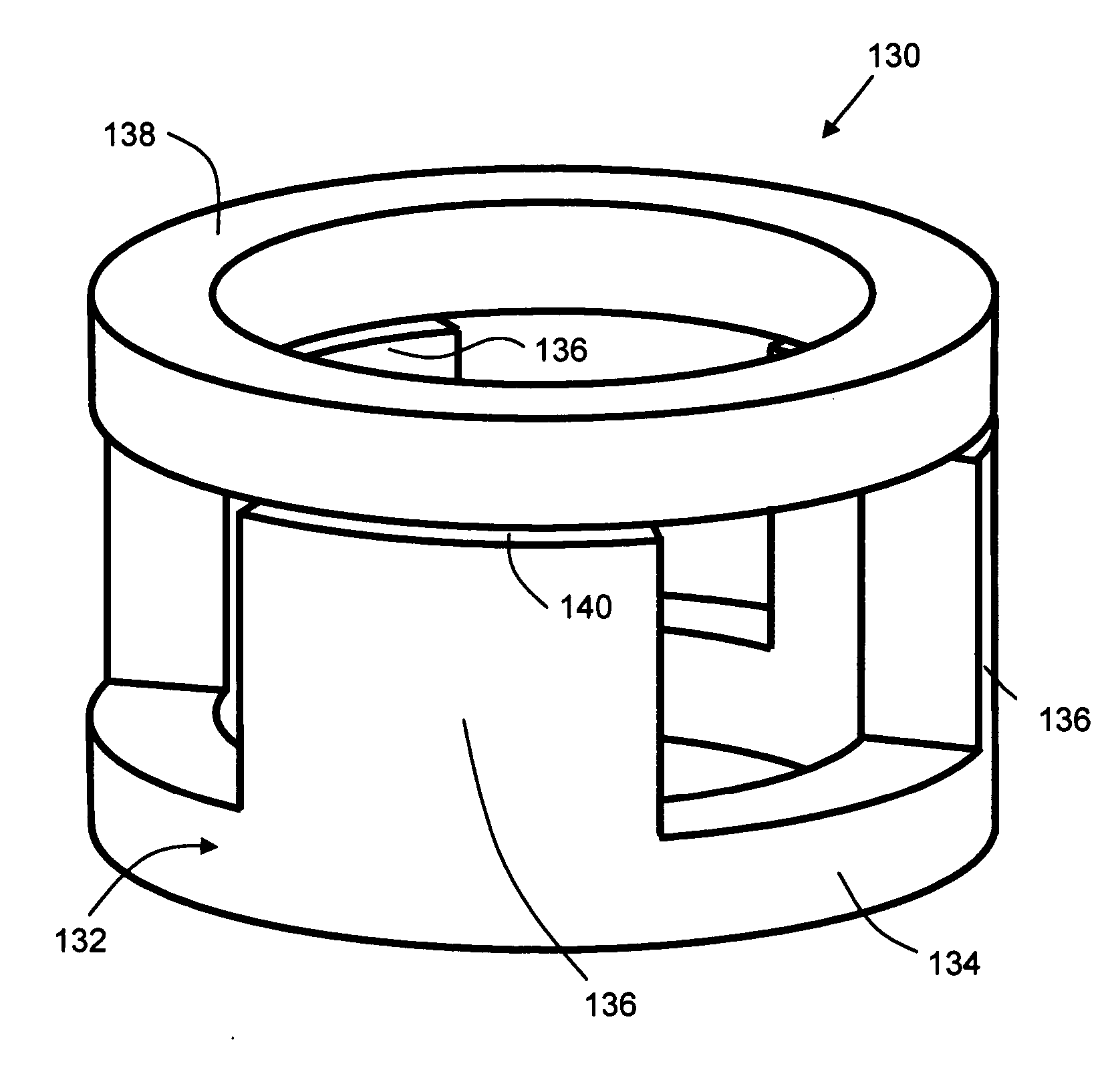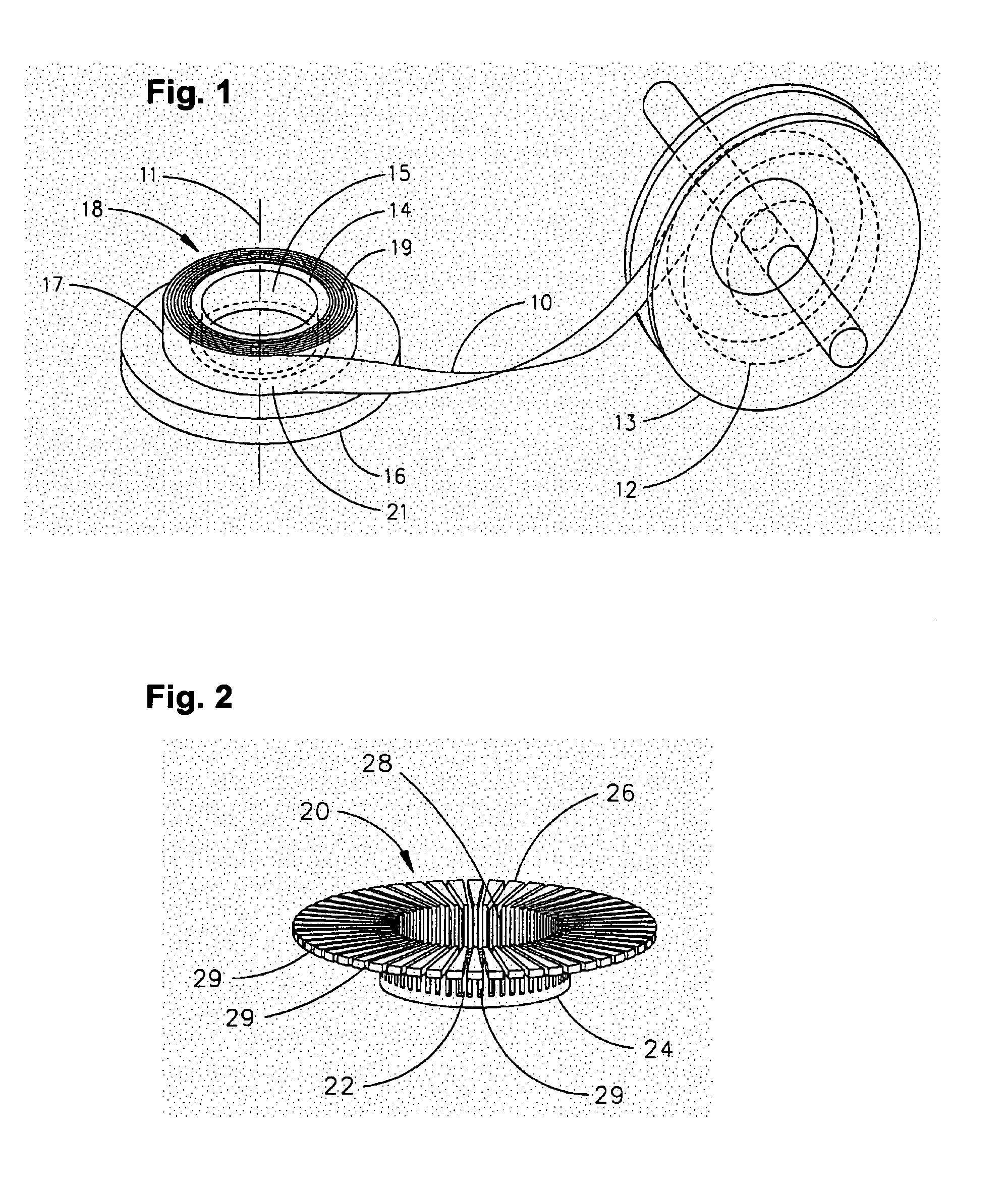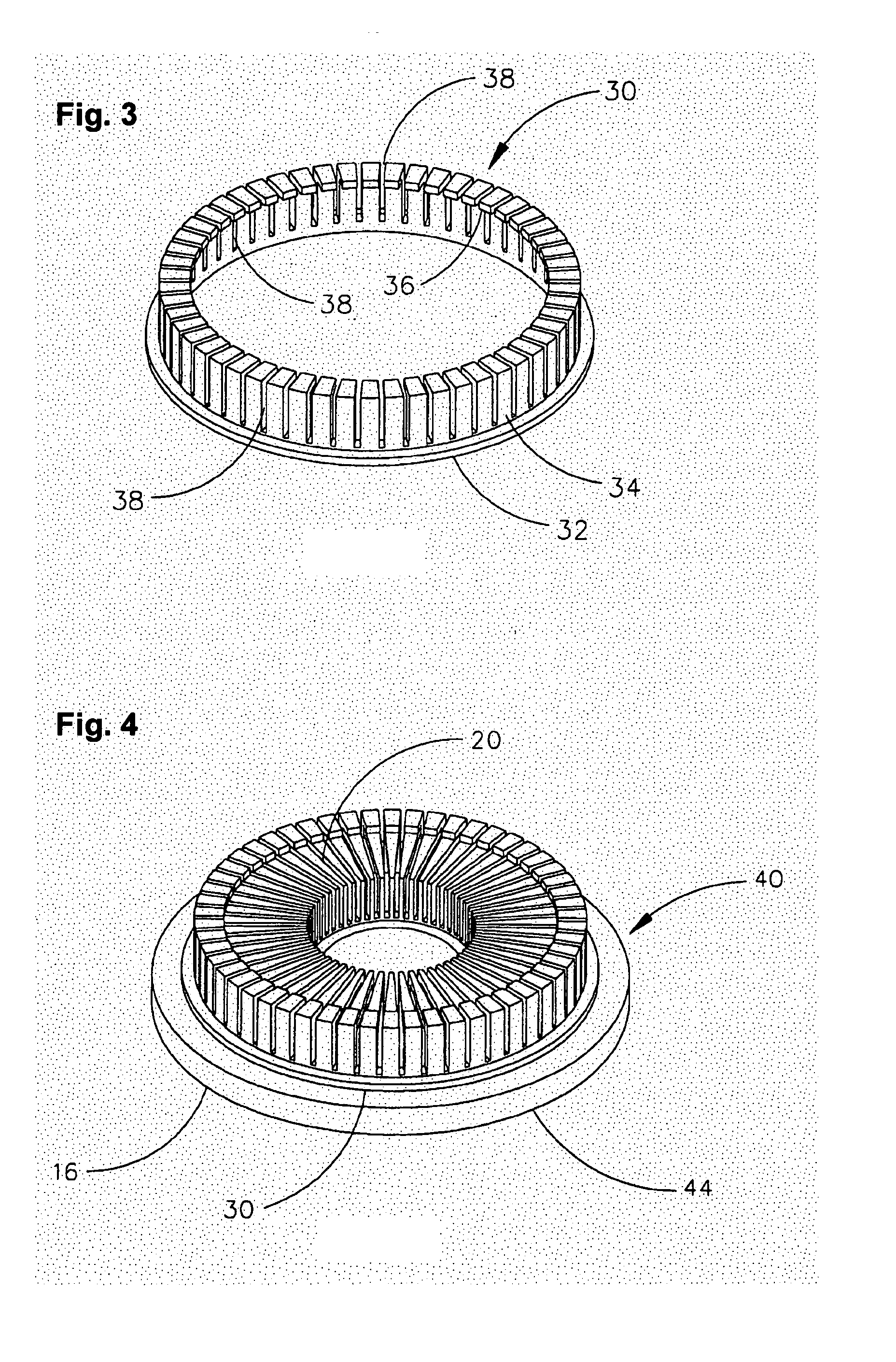While it is generally believed that motors and generators having rotors constructed with advanced permanent
magnet material and stators having cores made with advanced, low-loss
soft materials, such as
amorphous metal, have the potential to provide substantially higher efficiencies and power densities compared to conventional radial airgap motors and generators, there has been little success in building such machines of either axial or radial airgap type.
Previous attempts at incorporating amorphous material into conventional radial or axial airgap machines have been largely unsuccessful commercially.
However, at high frequencies, conventional iron or steel components are no longer practical.
The core losses of the iron or steel components increase with increasing excitation frequency, reducing overall device efficiency.
Additionally, at very high exciting frequencies, the component may become extremely hot, cannot be cooled by any reasonably acceptable means, and may cause
device failure.
Nevertheless, certain of the physical properties of these
advanced materials make conventional fabrication techniques difficult or impossible.
However, these metals are thinner and harder than virtually all conventional metallic soft magnetic alloys, so conventional
stamping or
punching of laminations causes excessive wear on fabrication tools and dies, leading to rapid failure.
The resulting increase in the tooling and manufacturing costs makes fabricating bulk
magnetic components using such conventional techniques commercially impractical.
None has proven satisfactory for reasons including cost-effectiveness, manufacturing
repeatability, or process
cycle time.
The thinness of amorphous metals also translates into an increased number of laminations needed to form a component with a given cross-section and thickness, further increasing the total cost of an
amorphous metal magnetic component.
Machining techniques used for shaping ferrite blocks are also not generally suited for
processing amorphous metals.
However, the annealing generally renders the
metal very brittle, further complicating conventional manufacturing processes.
As a result of the aforementioned difficulties, techniques that are widely and readily used to form shaped laminations of conventional materials, including
silicon steel and other similar metallic sheet-form FeNi- and FeCo-based crystalline alloys, have not been found suitable for manufacturing amorphous and nanocrystalline
metal devices and components.
This inability to fabricate complex three dimensional shapes from soft magnetic ribbon while retaining satisfactory magnetic properties has been a significant impediment, for both dynamoelectric and static applications that require high efficiencies and low loss components.
Amorphous metals thus have not been accepted in the marketplace for many devices; this is so, notwithstanding the great potential for improvements in size, weight, and energy efficiency that in principle would be realized from the use of a high induction, low loss material.
However, the gapped toroidal geometry affords only minimal design flexibility.
It is generally difficult or impossible for a device user to adjust the gap so as to select a desired degree of shearing and
energy storage.
In addition, the equipment needed to apply windings to a toroidal core is more complicated, expensive, and difficult to operate than comparable winding equipment for laminated cores.
Oftentimes a core of toroidal geometry cannot be used in a
high current application, because the heavy gage wire dictated by the rated current cannot be bent to the extent needed in the winding of a toroid.
As a result, they are not well suited and are difficult to adapt for polyphase transformers and inductors, including especially common three-phase devices.
Moreover, the stresses inherent in a strip-wound toroidal core give rise to certain problems.
In addition, gapping a wound toroid frequently causes additional problems.
Therefore the actual gap tends to close or open in the respective cases by an unpredictable amount as required to establish a new
stress equilibrium.
Therefore, the final gap is generally different from the intended gap, absent corrective measures.
Since the
magnetic reluctance of the core is determined largely by the gap, the magnetic properties of finished cores are often difficult to reproduce on a consistent basis in the course of high-volume production.
Such a process understandably entails significant manual labor and manipulation steps involving brittle annealed
amorphous metal ribbons.
These steps are especially tedious and difficult to accomplish with cores smaller than 10 kVA.
Furthermore, in this configuration, the cores are not readily susceptible to controllable introduction of an air gap, which is needed for many
inductor applications.
It is also difficult with step-lap core configurations to provide fully balanced polyphase devices, i.e., devices in which the electrical characteristics obtained at the terminals for each of the phases is substantially identical.
 Login to View More
Login to View More 


